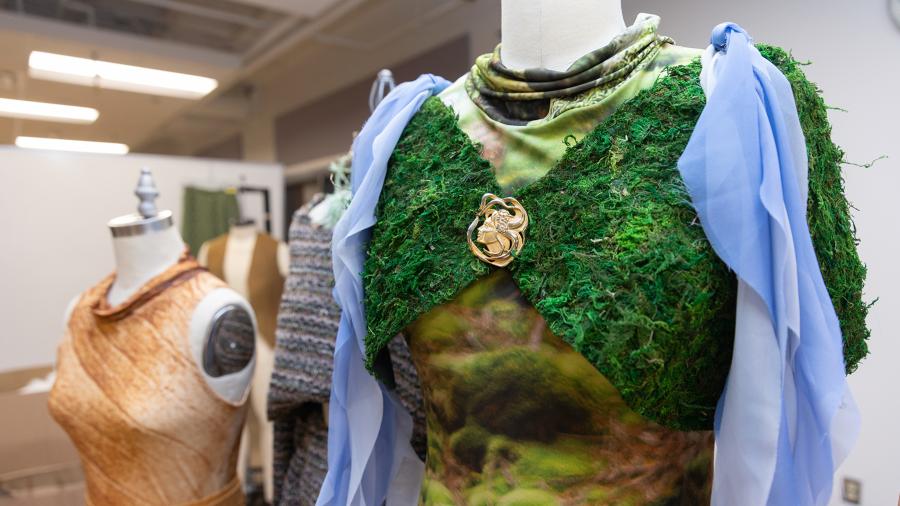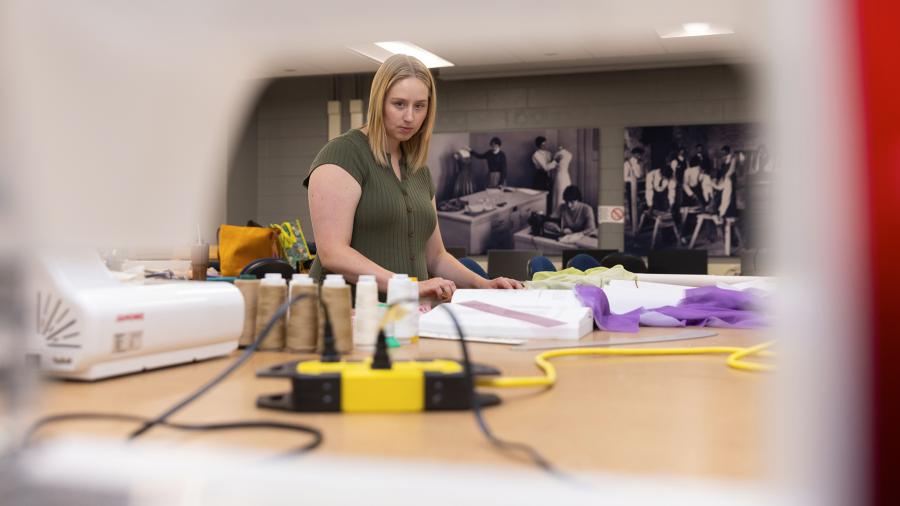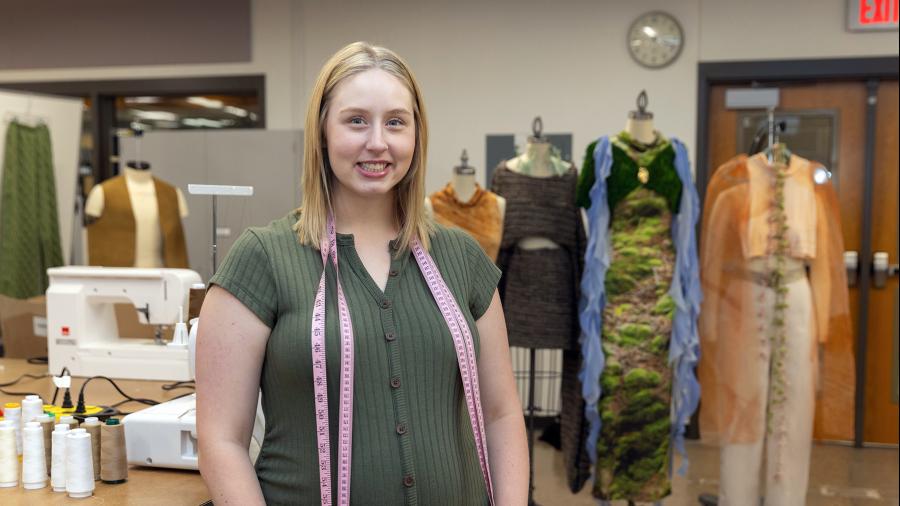The excitement of being a featured designer at Omaha Fashion Week isn’t lost on Bex Cermin: Going backstage, seeing her creations modeled on the runway, networking with other designers, investors and buyers.
The event, from Thursday to Sunday, Aug. 22-25, in Omaha, Neb., has become the fourth largest fashion week in the U.S., expected to draw more than 10,000 people viewing work from 36 designers.
Cermin’s goal with her nature-inspired collection, ironically, will be to momentarily transport the crowd away from the bright lights and glamor. “Each look represents a moment in nature. I want the audience to feel like they can relate to that environment,” she said.

Cermin, who will present Friday, is a student in the Master of Fine Arts in design program at UW-Stout. She also teaches in the fashion design and development undergraduate program.
She will present seven looks and a total of 15 pieces of clothing she designed and created this summer in the Fryklund Hall Apparel Production Lab. The designs will feature patterns found in nature that she has gleaned from licensed photos. The designs, five for women and two for men, are named:
- Morning Light
- Prairie Desert
- Leafed in Lilacs
- Falling Water
- Mossy Overgrowth
- Grandma’s Garden
- Winter Cloud.
The fashion show is a high-profile opportunity to reveal her expanded vision of how apparel design, principles of design and nature intersect.

The vision was born largely from a project on the biophilic effect she developed during a graduate research course with Professor Julie Peterson. The biophilic effect highlights humans’ affinity for nature and how representation of nature in work and living spaces can lower blood pressure, speed healing and more.
“It helps our well-being in the built environment,” Cermin said.
She conducted a research project, “Un.Real,” during the course. She surveyed 70 people on their reactions to three plants: one real, one that she knitted from textiles to look like a plant and another knitted plant that included bird sounds and scents.
Survey participants’ reactions to the third one were as strong, if not stronger, than the real plant, proving to Cermin that the biophilic effect can occur with direct and indirect forms of nature. Designs that bring the outside world in can be impactful.

“To me, it was not about the real plant but the experience of nature. It inspired me to create this new collection and bring this research experience into apparel,” she said.
Cermin’s collection will be modeled during the second half of Friday’s event, for the featured or professional designers. The show also is a competition; if Cermin wins she could return to Omaha Fashion Week in the future as a headliner. The first half of the show will be for emerging designers.
Although Cermin is showcasing her apparel and hopes to continue to design high-end fashions, her creative work also could branch into a line of home décor. “I’m fascinated by the biophilic effect and how textiles can convey the story of a (geographic) area,” Cermin said.

She grew up in western Wisconsin, in St. Croix Falls, where her parents owned St. Croix Floral. She was married in one of their gardens. Being around nature “has always inspired me,” she said.
The M.F.A. program and her future
Cermin has received several grants to support her participation in Omaha Fashion Week, including two from the M.F.A. program and one from the event itself, to help pay for materials and travel.
The M.F.A., part of UW-Stout's School of Art and Design, requires students to develop a focus area based on their creative interests. The cross-disciplinary approach helps students customize the program to their skillsets. “I love the program,” Cermin said, citing how the professors have supported her special interest area of fashion.
Erik Evensen, M.F.A. program director, said Cermin’s “interdisciplinary creativity has impressed me since she first stepped foot into this program. Her work blends graphic design, illustration and textile sculpture with fashion and apparel.
“Our program allows students to connect a lot of dots with their graduate research, and she is constantly doing just that. She's a broad thinker and always has the full experience in mind: the initial concept, the execution, the context and the user experience,” Evensen said.
Cermin expects to finish her M.F.A. in May while continuing to teach. After graduating, she would like to teach full time in an apparel or fashion design program and continue to create.
“It’s important for students to see their professors doing inspiring things,” said Cermin, who has studied at the London College of Fashion and New York Institute of Art & Design, interned at Centric Brands in New York and hopes to someday soon present her creations at New York Fashion Week. She has a bachelor’s degree in apparel, merchandising and design from Iowa State University.
###






